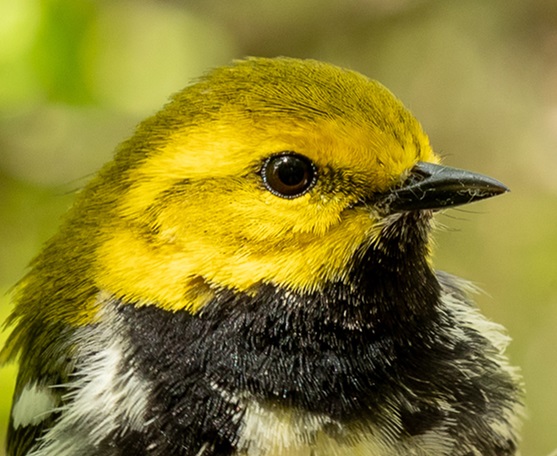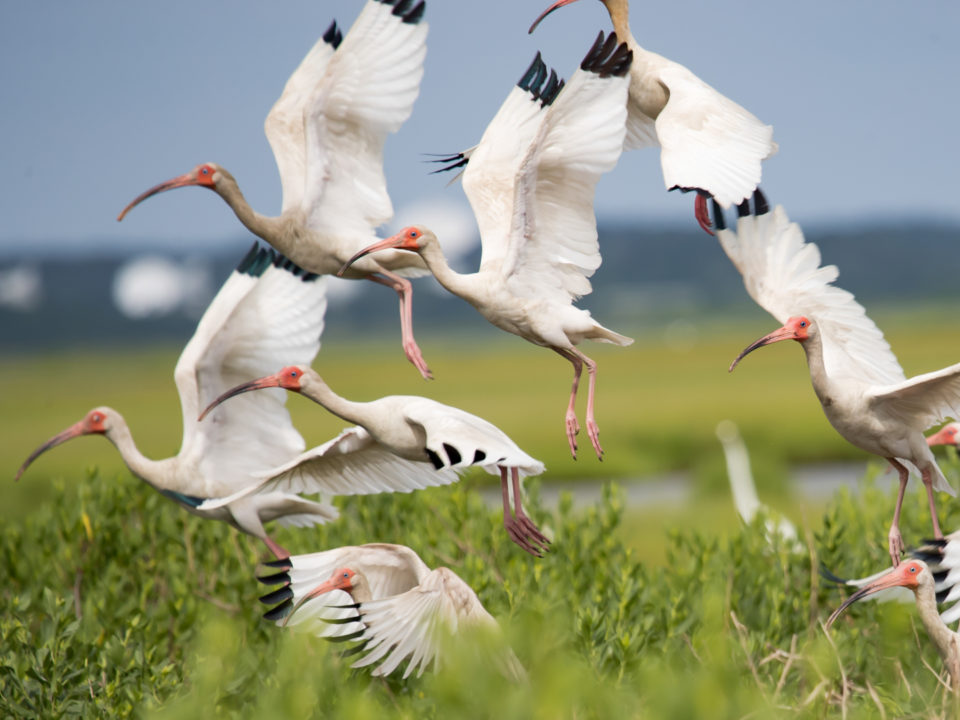2014 Whimbrel Watch establishes new high mark
Camellia Near Benefit Rd June 22
June 23, 2014Bald Eagle “Grace” Takes Flight
June 23, 2014
It begins with a nearly imperceptible whistle and then a faint line along the horizon. In minutes the flock will be overhead treating the team of counters to a full chorus of contact calls. Flock after flock of whimbrels follows this same flight line in the last three hours of the evening. By morning they will be in Toronto, some 800 kilometers (500 miles) away. Within five days they will be on their arctic breeding grounds preparing a nest for eggs. The onlookers have come to a dock on Box Tree Creek along the lower Delmarva Peninsula to count the birds as they pass and to see them off on their long, nonstop flight north. The birds have been here in the marshes for three weeks gorging on fiddler crabs and putting on fat to fuel the flight.
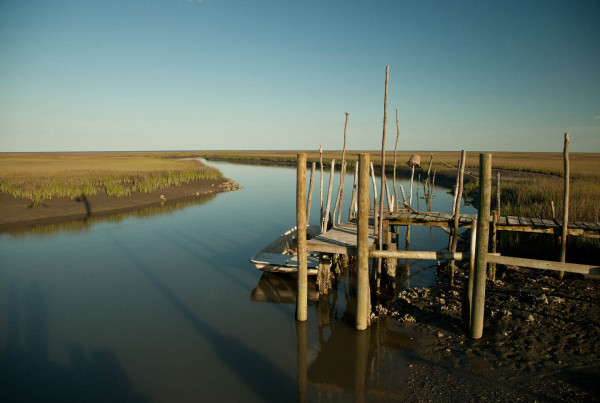
View to the south from Box Tree dock along the lower Delmarva Peninsula. Photo by Bryan Watts.
Since the spring of 2009, The Center for Conservation Biology and The Nature Conservancy have teamed up to run a “leaving count” of whimbrels around the third week of May. In 2014, the count covered eight days between the 20th and 27th of May and documented 132 flocks totaling 8,249 whimbrels. The 2014 total is a record high for the site and represents a significant portion of the population for the entire Western Hemisphere. In addition to whimbrels, the counters recorded 642 black-bellied plovers, 894 dunlin, and 2,021 short-billed dowitchers leaving for the arctic.
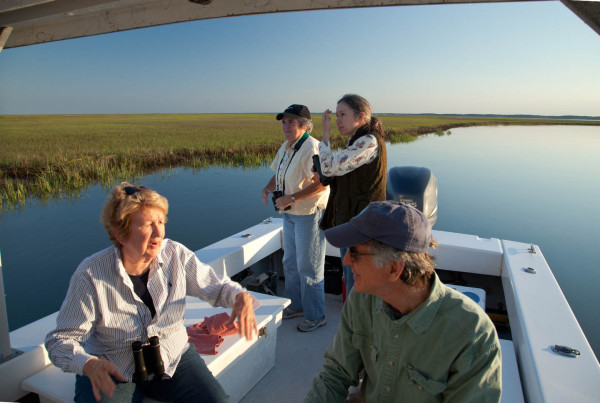
Jane Batten, Talbot Jordan, Roberta Kellam, and Polk Kellam (L to R) talk shorebirds along the edge of Elkins Marsh near Box Tree. Photo by Bryan Watts.
The birds gather, rally up out of the marsh, assemble in V formations, and head north. Until recently, researchers did not know where the birds staging here were headed.
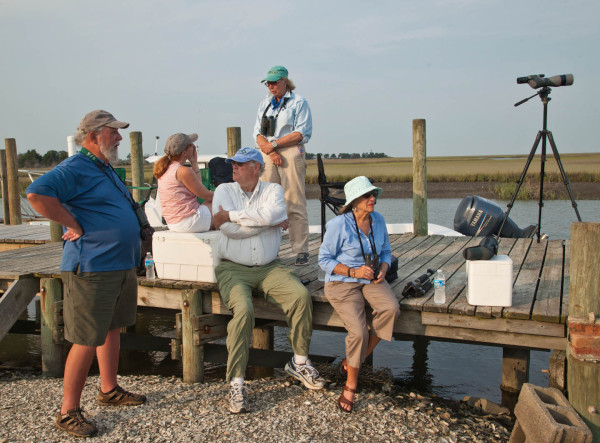
Barry Truitt, Jill Bieri, Jack Burke, Judith Burke, and Tata Kellam wait on Box Tree dock for whimbrels to begin flying. Photo by Bryan Watts.
A satellite tracking project conducted by the group in this location has demonstrated that the birds represent a mixture from two breeding populations. Some will fly 3,000 kilometers to breeding grounds within the Hudson Bay Lowlands. Others will fly the longer 4,800 kilometers to nest within the Mackenzie Delta in extreme western Canada.
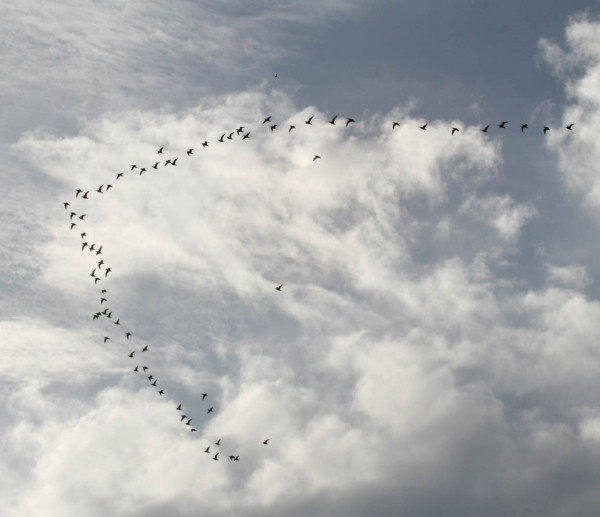
Flock of whimbrels flying north over Box Tree on their way to the arctic. Photo by Barry Truitt.
Written by Bryan Watts | bdwatt@wm.edu | (757) 221-2247
June 23, 2014
Related posts
Two whimbrels, including an adult (foreground) that exhibits worn body plumage, especially along the scapular region, and a juvenile (background) with fresher plumage. CCB collaborated with eBird and used photographs like these to better understand differences in migration patterns between adults and juveniles at migratory stopover sites in the eastern United States. Photo credit: Macaulay Library (ML116488021)

